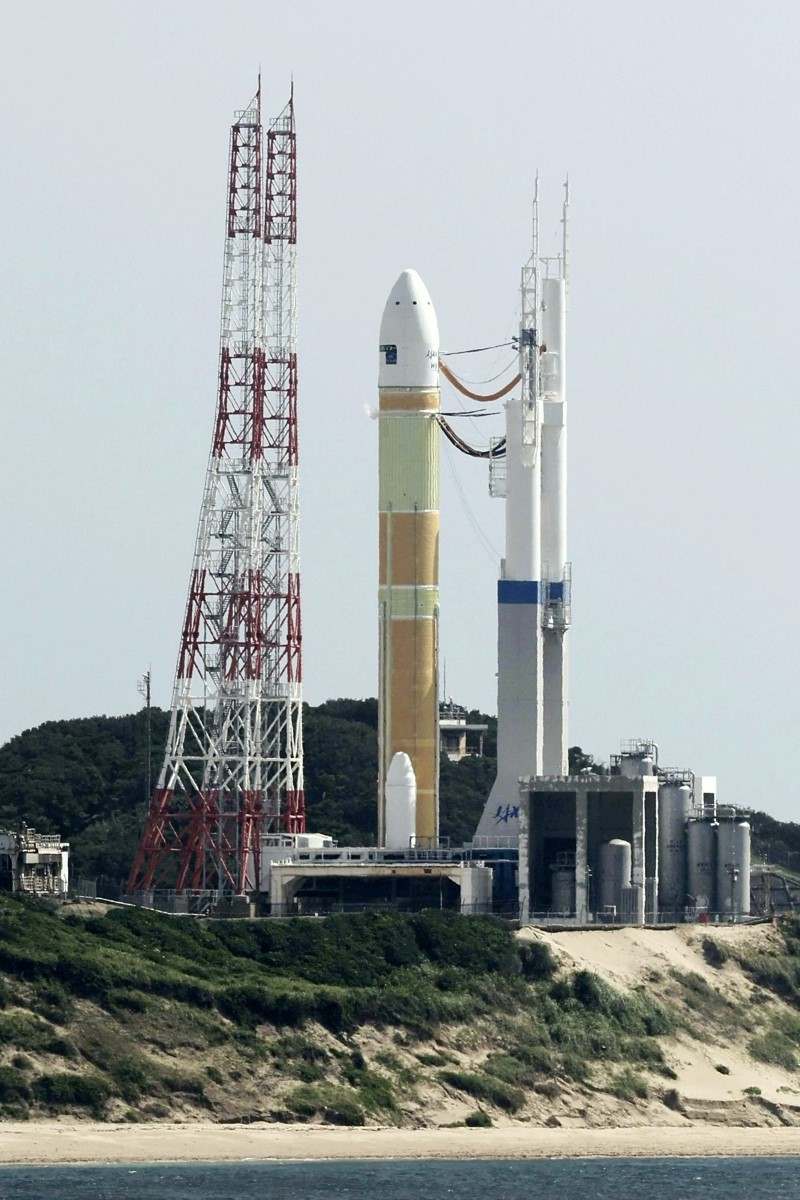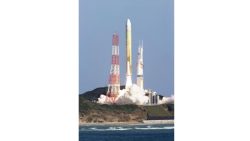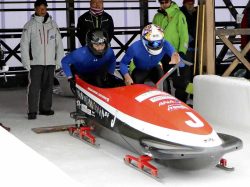
The third H3 rocket is seen in the Tanegashima Space Center, Kagoshima Prefecture, on Monday.
12:26 JST, July 1, 2024 (updated at 17:00 JST)
The third H3 rocket, part of Japan’s new flagship line of rockets, was launched successfully from the Tanegashima Space Center in Kagoshima Prefecture shortly after noon Monday. It carried a government satellite for Earth observation.
The rocket reached its planned orbit, and the Daichi-4 advanced land observing satellite separated from the rocket. This is the second successful launch of the H3, after one in February, and marks a major step toward practical use of the new rocket.
According to the Japan Aerospace Exploration Agency, the rocket, which is about 57 meters in length, lifted off from the space center at 12:06 p.m. as scheduled. The first and second stage engines ignited in sequence, and the H3 ascended skyward. About 16 minutes after launch, it reached the target altitude of about 613 kilometers and released the Daichi-4.


The third H3 rocket lifts off from the Tanegashima Space Center in Kagoshima Prefecture on Monday.
The H3 is the successor to the H2A rocket, which is scheduled to be retired this fiscal year. It was jointly developed by JAXA and Mitsubishi Heavy Industries, Ltd. as the new flagship rocket that will play a central role in Japan’s space transport for the next 20 or so years. The new rocket can launch a payload about 30% heavier than the H2A, and it can accommodate satellites of various sizes. JAXA aims to halve the price of a launch from the around ¥10 billion required for an H2A in a bid to capture global demand for satellite launches.
However, the H3 got off to a rough start with the failure of its maiden launch in March last year. A second launch this February was successful, but these first two rockets were regarded as “test vehicles,” and the third was the first to be launched for full operation.
This fiscal year, the H3 is scheduled to carry into orbit a Michibiki, quasi-zenith satellite, or what is sometimes called the “Japanese GPS.” In the next fiscal year and beyond, the rocket is also expected to be involved in important scientific missions for Japan, such as by carrying into space satellites for national security and a probe to explore water resources at the moon’s polar regions.
Meanwhile, the Daichi-4, which weighs about 3 tons and measures 6.4 meters in height, was successfully put into orbit. It is equipped with high-performance radar that allows detailed assessments of damage on the ground even at night or in bad weather. The satellite is the next in its series following the Daichi-3, which was lost along with the first H3 rocket in the unsuccessful launch. It is set to succeed the Daichi-2, which remains in operation after exceeding its designed life expectancy.
"Science & Nature" POPULAR ARTICLE
-

‘Fiercest, Most Damaging Invasive Weed’ Spreading in Rivers, Lakes in Japan, Alligator Weed Found in Numerous Locations
-

Univ. in Japan, Tokyo-Based Startup to Develop Satellite for Disaster Prevention Measures, Bears
-

Tsunami Can Travel Vast Distances Before Striking, Warn Japanese Researchers
-

Japan’s H3 Rocket Failed in Latest Launch, Says Official
-

Japan’s H3 Rocket Likely Made 1.5 Trips Around Earth; Analyst Believes Satellite Almost Certainly Lost As Well
JN ACCESS RANKING
-

Japan Govt Adopts Measures to Curb Mega Solar Power Plant Projects Amid Environmental Concerns
-

Core Inflation in Tokyo Slows in December but Stays above BOJ Target
-

Major Japan Firms’ Average Winter Bonus Tops ¥1 Mil.
-

Tokyo Zoo Wolf Believed to Have Used Vegetation Growing on Wall to Climb, Escape; Animal Living Happily after Recapture
-

JAL, ANA Cancel Flights During 3-day Holiday Weekend due to Blizzard

























